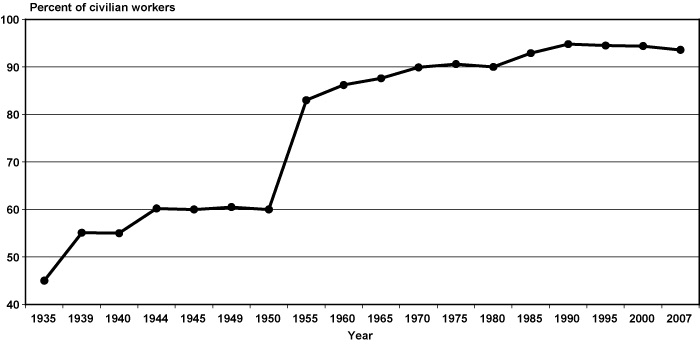
Social security (from Ira Katznelson, When Affirmative Action Was White: An Untold History of Racial Inequality in Twentieth-Century America (NY: Norton, 2005)

Overall, the South offered its residents comparatively low levels of help. NY average relief grant is $30.59, 1933; $490.06, 1935; national average is $15.51, 1933, $29.64, 1935; Virginia, “one of the more generous Southern states,” moves from $6.94 in 1933 to $17.65 in 1935. WPA review notes that “the low general averages for the South are due in part to the small benefits given to rural and Negro relief cases.” Aid heavily subsidized by federal government: DC pays 53% of relief bill in Conn., 55% in NY, but 87% in Va., 95% in Ala. and Ga., 98% in NC, and almost 100% in Fla. Lowest is Texas, at 73%, and over 80% everywhere else in S.
“Social security, as passed and signed by President Roosevelt in August 1935, produced a stark outcome.” About 65% of African-Americans nationally are excluded, and 70-80% in the South. About 40% of whites are left out as well.

The Social Security Act of 1935 was followed by the family protection program of 1939, which clarified that benefits could be claimed not just by retirees but also by dependents and survivors of covered workers.

The restrictive provisions were eliminated in 1954, but “even then, African Americans were not able to catch up, since the program required at least five years of contributions before benefits could be received. Thus, for the first quarter century of its existence, Social Security was characterized by a form of policy apartheid, something neither Roosevelt nor his study commission had advocated.”
